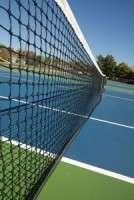
Grand Slam tennis players in the US, Wimbledon and Australian Opens could improve their chances of winning sets, matches and even tournaments through more aggressive and strategic use of challenges, Swinburne research has found.
Analysis of the ‘nested’ scoring system used in tennis by esteemed Swinburne sports statistician, Professor Stephen Clarke and Sheffield University’s John Norman, found that players don’t have to increase their chances of winning a point very much, to significantly increase their chances of winning a match.
The two to four player challenges allowed on show courts in three of the Grand Slam tournaments are much more important than previously realised, and should be deployed later in games, later in sets and when players are behind, the new statistical modelling has shown.
“Optimal use of the three challenges available (in the Australian Open) can increase a player’s chance of winning a set to 55 per cent in an otherwise even contest,’’ Professor Clarke writes in a paper accepted for publication in the Journal of the Operational Research Society.
“This increases their chance of winning a best of three-set match to 58 per cent, and a best of five-set match to 59 per cent, which is nearly 60:40. That’s a lot of difference,” he said.
The ‘moneyball’-like analysis of the increased strategic advantage of a challenge acted much like compound interest, he said.
“If your chance of winning a match is 60 per cent, the chance of winning seven matches in a row to win the tournament is probably double what you had before, so it could have quite a drastic effect over the life of the tournament.
“There should be more aggressive challenging in more important points which tend to occur later in games, later in sets and when the player is behind rather than when ahead.”
To date, analysis of challenges from both Wimbledon and the Australian Open shows players are sparing in their deployment of challenges, and are successful only about 30 per cent of the time. It was unlikely players, coaches or commentators realised the strategic importance of challenges, he said.
Professor Clarke – himself a keen tennis, Australian Rules Football and cricket fan – said the Australian Open tennis crowd enjoyed the process of the challenge – which is replayed and dramatised using proprietary technology, as it added much to the tension and enjoyment of the tournament.
Similar challenge rules are expected to be introduced in other sports, prompting academics to consider the growing use of technology and how it will increasingly enable players to challenge umpires’ decisions.
For more such insights, log into our website https://international-maths-challenge.com
Credit of the article given to Swinburne University of Technology

